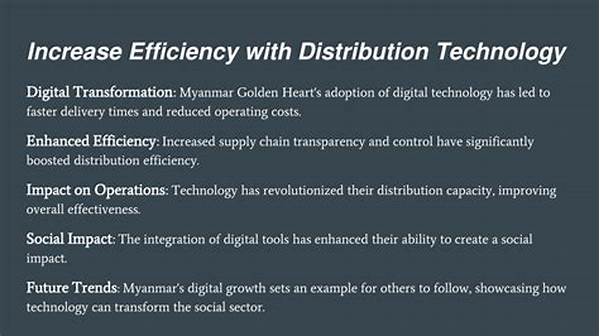In the contemporary era, the rapid evolution of technology has fundamentally altered how knowledge is distributed and accessed. Through the fusion of innovative tools and platforms, there is an unprecedented opportunity to bridge knowledge gaps across the globe. By leveraging technology for knowledge distribution, societies can foster inclusive educational growth, empower individuals, and drive global development. The dynamic interplay between technology and education thus constitutes a crucial area of focus for policymakers, educators, and technologists alike.
Read Now : Structuring Academic Book Reviews
The Role of Digital Platforms in Knowledge Dissemination
The advent of digital platforms has significantly transformed the landscape of education and knowledge sharing. With the proliferation of online learning management systems, digital libraries, and open educational resources, learners now have access to a vast array of knowledge at their fingertips. These platforms not only facilitate the dissemination of information but also promote interactive learning and collaboration among users worldwide. By leveraging technology for knowledge distribution, these platforms play an instrumental role in democratizing education, enabling individuals from diverse backgrounds to access high-quality educational materials. Moreover, digital platforms support lifelong learning, allowing individuals to continuously upskill and reskill in response to the evolving demands of the global job market. Nonetheless, challenges such as digital literacy and internet accessibility must be addressed to ensure equitable access to these technological advancements.
Key Technologies Driving Knowledge Distribution
1. Online Learning Management Systems (LMS): These systems provide structured learning paths and real-time feedback, thus enhancing the educational experience.
2. Massive Open Online Courses (MOOCs): MOOCs offer courses from leading universities, making higher education more accessible.
3. Artificial Intelligence (AI): AI enhances personalized learning by analyzing data to tailor content to individual learners’ needs.
4. Virtual and Augmented Reality (VR/AR): VR and AR create immersive educational experiences, facilitating better understanding and retention.
5. Cloud Computing: Cloud technologies empower seamless collaboration and resource sharing, integral to leveraging technology for knowledge distribution.
Challenges in Leveraging Technology for Effective Knowledge Distribution
Despite the immense potential of technology to advance knowledge distribution, several challenges persist. Ensuring equitable access to technological infrastructure remains a significant hurdle. Not all regions have the necessary digital infrastructure, leading to disparities in knowledge access. Furthermore, digital literacy is critical for maximizing technology’s benefits, yet many communities still lack basic skills to utilize these tools efficiently. Another challenge lies in addressing the digital divide, which is exacerbated by economic, geographic, and demographic factors. Additionally, data privacy and security concerns must be addressed to sustain trust in online educational environments. By overcoming these challenges, leveraging technology for knowledge distribution can reach its full potential, bridging educational gaps and fostering inclusive growth across the globe.
Read Now : Reference Management Software Options
The Impact of Technology on Traditional Education Models
Technology has initiated a paradigm shift in traditional educational frameworks. The integration of digital tools has redefined how educators deliver content, evaluate performance, and interact with students. Flipped classrooms, where students engage with instructional material outside the classroom via digital platforms, exemplify this shift. Remote learning facilitated by video conferencing tools during the global pandemic further underscored technology’s critical role in education continuity. Leveraging technology for knowledge distribution enables a more flexible and adaptive learning environment, accommodating diverse learning styles and paces. Furthermore, data analytics empower educators to gain insights into learner behavior, enabling targeted interventions to enhance educational outcomes. However, the transition to technologically driven education requires strategic planning, robust infrastructure, and ongoing support for educators and learners alike.
Strategic Approaches to Leveraging Technology for Knowledge Enhancement
To harness the full potential of technology in education, strategic approaches must be employed. Collaboration between governments, educational institutions, and technology providers is essential to promote widespread access and adoption. Investing in digital infrastructure, especially in underserved areas, is crucial to facilitate inclusive education. Additionally, fostering partnerships with tech companies can provide learners and educators access to cutting-edge tools and resources. Continuous professional development programs for educators are vital to equip them with the skills to integrate technology effectively into their teaching practices. Evaluating and promoting successful educational technologies through research and pilot programs can guide scalable implementations. Ultimately, leveraging technology for knowledge distribution requires a concerted effort to ensure it aligns with educational equity and maximizes its transformative impact on society.
Future Directions of Technology-Enabled Knowledge Distribution
The future of knowledge distribution is poised to be increasingly technology-driven, with emerging innovations continually reshaping the educational landscape. Artificial Intelligence and machine learning will likely provide more sophisticated adaptive learning systems, offering personalized learning paths and real-time feedback. Blockchain technology promises secure and verifiable record-keeping of academic achievements, potentially revolutionizing credentialing processes. Furthermore, as the Internet of Things (IoT) continues to evolve, interconnected devices are anticipated to create smarter educational environments, enhancing experiential learning. The role of technology in facilitating peer-to-peer learning and collaborative projects across geographic borders will further redefine traditional classroom boundaries. As we look forward, continued investment, research, and collaboration are imperative to fully realize the benefits of leveraging technology for knowledge distribution, ultimately creating a more informed and empowered global society.
Conclusion
In conclusion, the integration of technology in knowledge distribution has proven transformative, offering vast opportunities to reshape traditional educational paradigms. By leveraging technology for knowledge distribution, societies can unlock access to information and resources, empowering individuals and driving progress. However, realizing this potential requires addressing challenges such as digital literacy and equity in access to technological infrastructure. Strategic collaboration and investment in education technologies will be key to harnessing their full potential. As technology continues to evolve, its role in knowledge distribution will expand, necessitating ongoing adaptation and innovation to meet the needs of a rapidly changing world.
